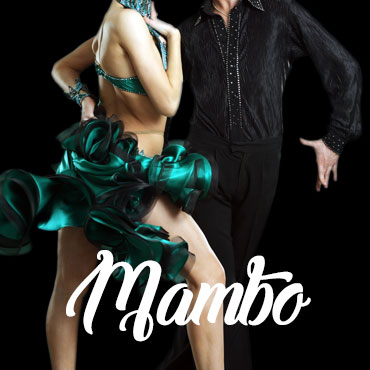The History Behind the Mambo
In the 1940s Americans became fascinated by Latin American rhythms. The original mambo music, El Guardia Con El Tolete, had its beginning in 1944 as a Rumba with a riff improvisation. The mambo combined American Jazz and the Afro -Cuban beat. Arthur Murray studios became famous for turning out some of the best mambo dancers of the era. As the parent of Cha-Cha and Salsa, the Mambo is an exciting challenge for all dancers.
Mambo Music
Mambo music is written in 4/4 time with each measure divided into four beats with the important musical accents occurring on the first and third beats. This dance can be done over a wide range of tempos.
Characteristics of Mambo
The components of Mambo or rock steps and side steps and foot styling includes points, kicks or flicks. The Latin hip movement in Mambo is an important aspect of the dance. The overall flavor of the dance is contained in the translation of the word Mambo which means “shake it” or “say it”.
Teaching Elements & Basics of Mambo
- Mambo breaks – Combinations and variations of rock steps
- Shine open position – Appearance, self-expression
- Footwork – Staccato footwork, kicks and controlled movement
- Turns – Develop momentum control, wait off heels
- Interrelation – Variety of figures adapted from other dancers
- Amalgamations – Combinations of figures
- Compare/contrast – Salsa, Rumba, Cha-Cha
What Are You Waiting For?
Start Dancing Today!
Mambo songs and artists include:
- Tequila – The Champs
- Mambo # 5 – Perez Perez Prado
- Cherry Cherry – Neil Diamond
- Livin La Vida Loca – Ricky Martin


